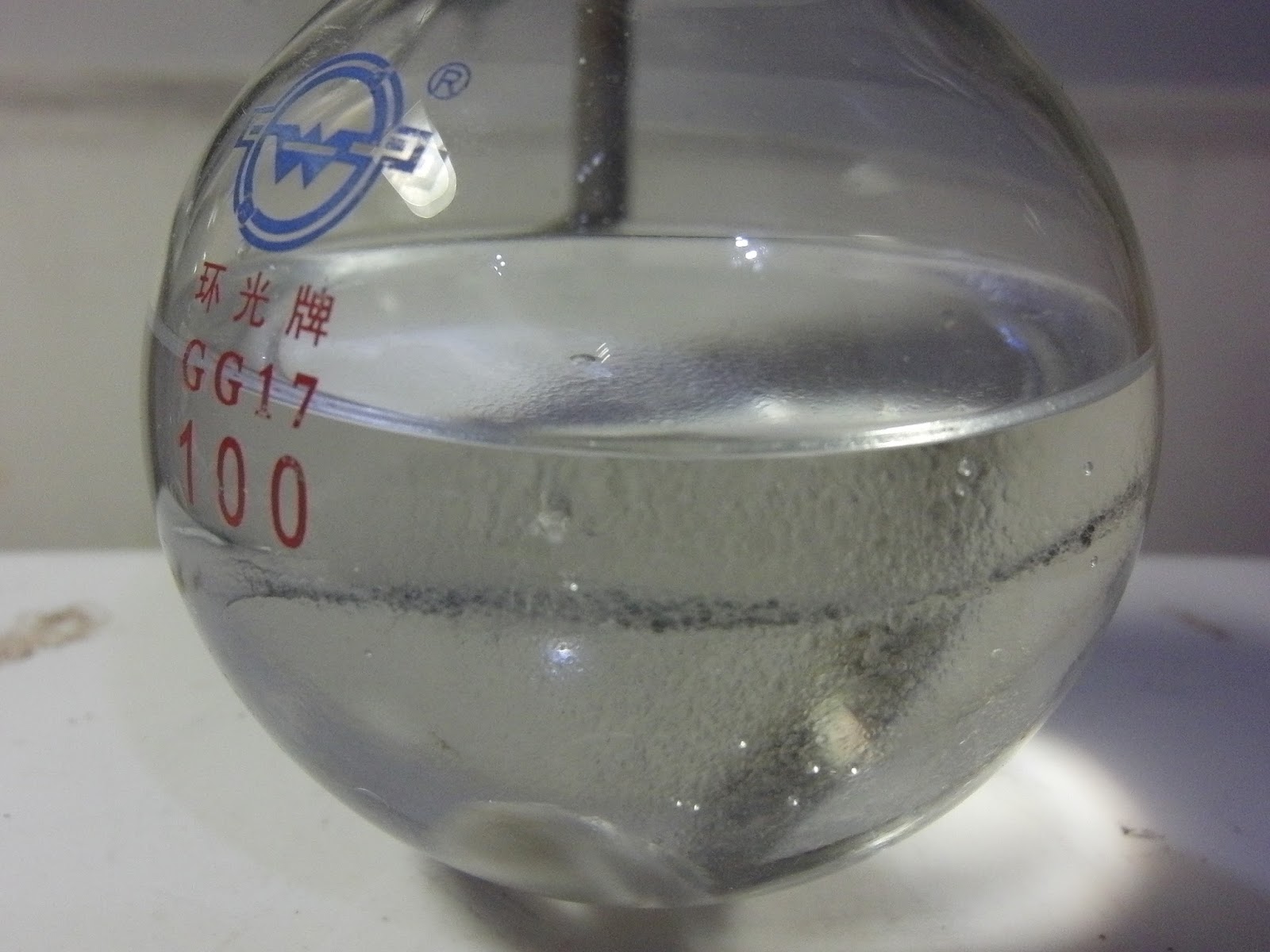Acetamide is an organic
compound. It is the simplest amide derived from acetic acid. It finds some use
as a plasticizer and as an industrial solvent. The related compound N,N-dimethylacetamide
(DMA) is more widely used, but it is not prepared from acetamide.
Acetamide
has been detected near the center of the Milky Way galaxy. This finding is
potentially significant because acetamide has an amide bond, similar to the
essential bond between amino acids in proteins. This finding lends support to
the theory that organic molecules that can lead to life (as we know it on
Earth) can form in space.
In
addition, acetamide is found infrequently on burning coal dumps, as a mineral
of the same name. (Wikipedia)
Reaction
Equations
Mechanism
Chemicals
1.
Ethyl
acetate: 30.00 g
2.
Aqueous
ammonia: 40.00 g
Procedure
1.
Add 33.26 mL ethyl acetate and
44.44 mL aqueous ammonia in a 150 mL round-bottomed bottle.
2.
Stir it thoroughly at 25~27℃ for 2~3 hr.
3.
Stand the mixture for 24 hr. If the
solution would not separate into two layers, it shows the reaction is finished.
4.
Distill the mixture to concentrate
the mixture to the half of the original volume.
Some ammonia will release in this process, remember to absorb the exhaust.
5.
Filter the solution.
6.
Concentrate the solution to
viscosity.
7.
Cool the solution in an ice bath.
8.
Filter the solution and wash it
with a little amount of cold ethanol.
9. Put it in an oven to evaporate ethanol.
10. Put it in a vacuum desiccator for
24 hr.
11. Calculate the yield.
Experimental Record
|
Weight
of Ethyl acetate
|
30.0000 g
|
|
Weight of acetamide
|
8.1719 g
|
|
Theoretical Weight of Acetamide
|
20.1124 g
|
|
Yield
|
(8.1719 g) / (20.1124 g) x 100%
|
|
|
= 40.63 %
|




















cool. But can you say,what are the by-side products? Why does the yield is so poor?
ReplyDeleteThe products are acetamide, water, ethanol, and and ammonia will also be released from solution. The hydrolysis of acetamide is also possible, so the products of that reaction are also possible, of which, ammonia becomes a product.
ReplyDelete